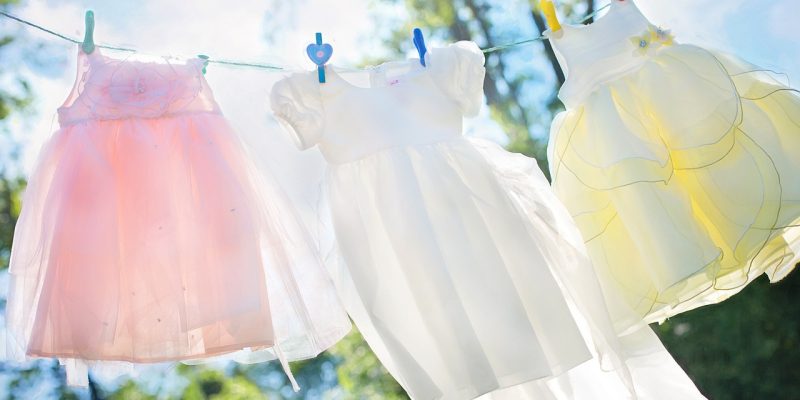Are you staring at a closet full of clothes you no longer wear, but feeling overwhelmed about what to do with them? You’re not alone. Many people struggle with how to get rid of clothes in an eco-friendly and meaningful way. Whether it’s the pair of jeans that no longer fits or the sweater you’ve outgrown stylistically, there are several options for responsibly clearing out your wardrobe. This guide will walk you through various methods to dispose of, repurpose, or give new life to your old clothes.
Understanding the Importance of Clothing Disposal
The process of discarding our clothes extends beyond merely clearing out space in our wardrobes; it has profound implications on the global environment. The fashion industry is a significant contributor to landfill waste, with countless garments ending up in dumps each year, exacerbating the world’s waste management crisis. This reckoning with waste highlights the urgency of adopting more mindful disposal practices to mitigate the environmental impact. By choosing to dispose of our clothing thoughtfully, we not only lessen our ecological footprint but also pave the way for a more sustainable future.
Moreover, the act of giving our garments a second chance through donation or repurposing can have a ripple effect, fostering a sense of community and support for those in need. It champions the idea of a circular economy, where the life cycle of products is extended, reducing the demand for new resources and minimizing waste. This approach not only conserves resources but also highlights the value of garments as more than just disposable items, encouraging a shift in how we view consumption and waste.
Embracing eco-friendly disposal methods can empower individuals to contribute positively to the environment and society. It calls for a collective effort to rethink our consumption habits and the lifecycle of our possessions, advocating for a world where sustainability is woven into the fabric of our daily lives. Engaging in responsible clothing disposal practices is a critical step towards this vision, underlining the importance of our choices and their impact on the planet and future generations.
Sell Your Clothes for Some Extra Cash
Transforming your closet clutter into cash is not only a savvy move for your wallet but also benefits the environment by giving your clothes a second life. The digital marketplace offers a plethora of platforms where you can reach potential buyers with ease. Online platforms like eBay, Poshmark, and Depop have streamlined the process of selling clothes, providing a wide audience and user-friendly interfaces. For those who prefer in-person transactions, local consignment shops present an excellent opportunity. Here, you can sell your clothes directly to the store, or they may offer to sell them on consignment, giving you a portion of the proceeds once sold. Additionally, organizing a garage sale can attract neighbors and community members looking for unique finds at a bargain, turning your unwanted garments into cash.
When preparing clothes for sale, presentation is key. Ensure each item is laundered, free of stains and odors, and in the best condition possible. Photographing your items in good lighting and from multiple angles can also enhance their appeal to online shoppers. For high-end pieces or designer labels, consider setting your price slightly higher, but remain open to negotiation to ensure a swift sale. Selling your clothes not only clears your space and offers financial rewards but also aligns with sustainable practices by extending the lifecycle of garments, reducing waste, and lessening the demand for new production. Whether you’re looking to declutter, make some extra money, or contribute to a more sustainable planet, selling your unwanted clothes offers a rewarding solution.
Donate to Charities or Local Thrift Stores
Donating your gently used clothes to charities or local thrift stores is an impactful way to support your community and environment. This act of generosity can provide essential clothing to those in need, whether through direct donation to individuals or by raising funds for charitable causes when your items are sold. Before gathering items to donate, it’s important to research organizations in your area to understand their specific needs and guidelines. Many charities are in constant need of clothing, but it’s crucial to ensure your donations match their current requirements.
Inspect each item you plan to donate carefully. Clothing should be clean, free from damage, and in a condition that respects the dignity of the next wearer. It’s worth noting that some organizations may accept items with minor wear and tear for recycling purposes, but it’s best to verify this in advance. Additionally, consider the seasonality of your donations; for instance, donating winter coats during the colder months can be especially helpful.
For those interested in supporting local communities, thrift stores often play a vital role in fundraising for neighborhood projects and services. Donating to these stores not only helps to keep your pre-loved items out of landfills but also supports the economic sustainability of local charities.
Remember, the process of donating should be thoughtful and intentional. By taking the time to donate responsibly, you’re not just decluttering your home; you’re contributing to a cycle of giving that benefits the planet and supports individuals in your community.
Host a Clothing Swap Party
Hosting a clothing swap party is not only an innovative solution for refreshing your wardrobe but also serves as a delightful way to strengthen community ties and promote sustainable living. The premise is simple: gather a group of friends or family members who are interested in giving their gently loved clothes a new lease on life. It’s an engaging event that encourages participants to recycle fashion items amongst each other, ensuring that no garment goes to waste.
To ensure a successful clothing swap, it’s beneficial to set some ground rules. Encourage attendees to bring items that are in good condition, fashionable, and ready to be loved by someone new. This helps maintain a standard of quality and respect for all participants. Organize the clothes into categories or sizes for easy browsing, and decide on a fair system for swapping, such as a one-for-one exchange or using tokens.
Not only does a clothing swap party offer a cost-effective way to diversify your wardrobe, but it also fosters a sense of camaraderie as participants share stories behind their items, fashion tips, or styling advice. It’s an occasion that champions the joy of discovery, as one person’s seldom-worn shirt becomes another’s new favorite piece.
Beyond the immediate benefits of decluttering and updating one’s wardrobe, clothing swap parties underscore the significance of reusing and sharing resources within our communities. They serve as a testament to the power of collective action in reducing the environmental impact of fashion, showcasing how mindful choices can lead to meaningful change. Engaging in this fun, communal activity brings to light the myriad of possibilities for living more sustainably, one swap at a time.
Upcycle Worn-Out or Damaged Clothes
Upcycling represents a creative and environmentally conscious approach to dealing with clothes that have seen better days. Instead of consigning these items to the trash, upcycling allows for a transformation, breathing new life into fabrics that might otherwise contribute to landfill issues. This process not only mitigates waste but also sparks innovation and personal expression in crafting unique items.
For instance, old t-shirts can find a second life as chic tote bags, braided bracelets, or even as part of a colorful quilt, turning memories into functional art. Jeans that have frayed beyond repair can be deconstructed and woven into durable rugs or stylish denim jackets, showcasing a blend of fashion and sustainability.
Furthermore, upcycling provides an excellent opportunity for learning new skills or honing existing ones. Various online tutorials and local workshops offer guidance on transforming worn-out garments into valuable pieces, making it accessible for everyone to contribute to a more sustainable fashion ecosystem.
This approach emphasizes the value in every piece of fabric, challenging the throwaway culture prevalent in today’s society. By choosing to upcycle, individuals not only reduce their environmental footprint but also celebrate the potential in every garment, fostering a deeper appreciation for the resources and labor that go into creating our clothes. Through imagination and creativity, upcycling worn-out or damaged clothes becomes an act of environmental stewardship and personal innovation, proving that even the most worn garments can be given a new purpose.
Recycle Textiles Not Suitable for Wear
For those garments too worn or damaged to be repurposed or donated, recycling offers a sustainable pathway to ensure they don’t end up contributing to landfill waste. Many communities offer textile recycling facilities where old clothes are transformed into new materials, such as industrial rags, carpet padding, or even fibers for new textiles. Initiating a search for textile recycling options within your locality can be as simple as contacting your city’s waste management department or visiting their website for more information.
Some retailers and brands also participate in take-back programs, accepting old clothes regardless of condition, sometimes offering discounts on future purchases as an incentive. This initiative not only diverts textiles from landfills but also supports the brands’ efforts towards sustainability.
Before dropping off your textiles for recycling, it’s important to ensure they are clean and dry to avoid contaminating the recycling process. Although these clothes may no longer serve their original purpose, recycling them contributes to the reduction of environmental harm and supports the creation of sustainable products.
It’s worth noting that while recycling is a preferable option for textiles unsuitable for wear, not all materials may be accepted due to the complexity of fabric blends. Hence, verifying the types of textiles accepted by your chosen recycling program is crucial. Engaging in textile recycling underlines a commitment to environmental stewardship, showcasing a proactive approach to managing textile waste responsibly.
Properly Dispose of Clothes That Can’t Be Recycled
Navigating the challenge of disposing clothes that are beyond the scope of donation, sale, swapping, upcycling, or recycling requires a responsible approach to minimize environmental harm. In such cases, it’s crucial to explore eco-conscious disposal options. Some municipalities and waste management services offer guidance for disposing of non-recyclable textiles in an environmentally friendly manner. This may include designated collection days or drop-off locations specifically for textiles, ensuring they are handled in the least impactful way.
Innovative waste-to-energy programs may also be an option, where textiles are converted into energy through advanced processes. While not widely available, these programs represent a forward-thinking approach to managing waste that can’t be traditionally recycled.
Additionally, consider reaching out to local artists or schools. Creative individuals or educational programs often seek out materials for projects, and what is unsalvageable for you might be valuable to them. This method not only diverts clothes from landfills but also supports creativity and education within your community.
It’s equally important to use this as an opportunity to reflect on consumption habits. Prioritizing the purchase of high-quality, durable items over fast fashion can reduce the likelihood of clothes reaching an unrecyclable state. Investing in timeless pieces that can be easily repaired, or upcycled encourages a more sustainable approach to fashion.
Ultimately, while not all clothing can escape the fate of disposal, taking steps to ensure they are disposed of in the most eco-friendly manner possible is a small but significant contribution to reducing environmental impact. Engaging with community resources and remaining informed about sustainable disposal options plays a crucial role in this process.
Leverage Technology and Apps for Convenience
In the modern world, leveraging technology can streamline the process of decluttering your wardrobe while fostering sustainable habits. Various apps and online platforms simplify the task of finding new homes for your pre-loved items, whether you’re looking to sell, swap, or donate. For instance, Thred Up and The Real are excellent for those aiming to sell high-end secondhand clothes, offering a user-friendly interface and a vast audience. Meanwhile, platforms like Freecycle or local groups on social media, such as Buy Nothing, provide a community-focused approach to giving away clothes, ensuring they are reused and appreciated by others in your area.
These digital tools not only offer convenience but also amplify the reach of your efforts to declutter responsibly. By tapping into these resources, you can efficiently match your unwanted garments with someone who values them, minimizing waste and promoting a culture of recycling and reuse. Additionally, these platforms often feature community pages or forums where users can share tips and insights on sustainable living, further enriching the experience.
Embracing these technological solutions supports a circular economy, connecting people in meaningful exchanges that extend the life cycle of clothes. It exemplifies how digital innovation can be harnessed for environmental stewardship, making it easier for individuals to contribute to a more sustainable world. Through these apps and platforms, the act of decluttering transforms from a chore into an opportunity to engage with a like-minded community, driven by the shared goal of reducing waste and fostering a more responsible approach to consumption.













Comments